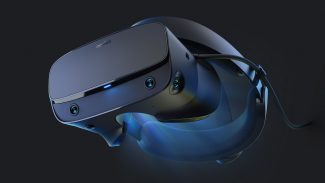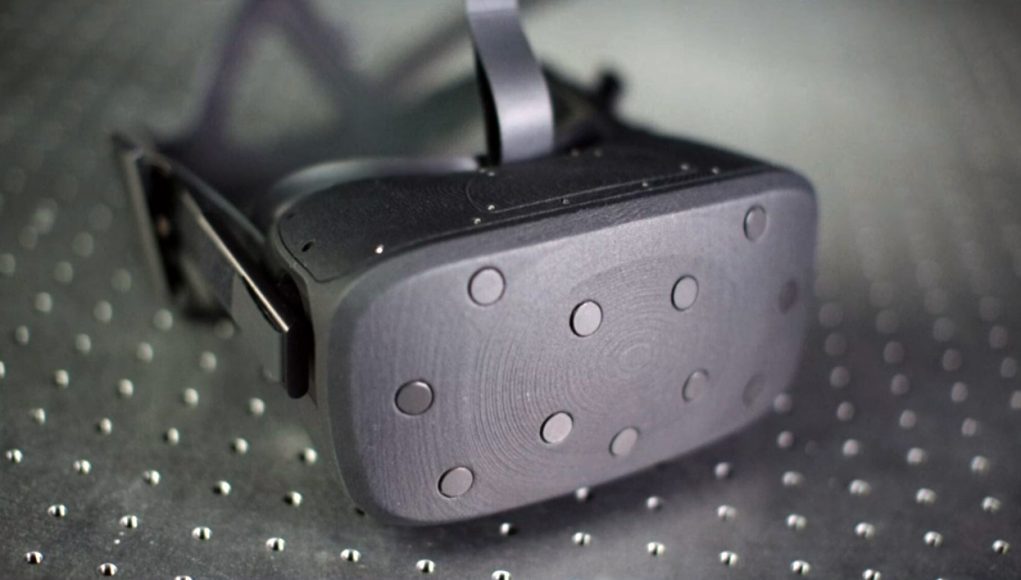With last month’s announcement of the Rift S, it became clear that Oculus was not ready to deliver a ‘Rift 2’, and instead opted to focus on making the existing Rift experience easier to use, rather than pleasing enthusiasts looking for a next generation experience. It was suggested that the company could have opted to offer a ‘Rift Pro’ for that latter group at the same time as the Rift S, but Facebook’s Jason Rubin explained in a recent interview why they didn’t think that was the right call.

Jason Rubin has been a key spokesman for Oculus since he joined the company in 2014. While he now more broadly oversees AR and VR content & partnerships at Facebook, he’s still closely involved with Oculus. Rubin sat down with Road to VR for a wide-ranging interview at GDC 2019 last month, during which he spoke to the idea of offering a more expensive ‘Rift Pro’ as a high-end option for enthusiasts, alongside the Rift S.
“There’s a cost to everything that a company does. And while there might have been some people that we’d make very happy with [a ‘Rift Pro’], or something along those lines, some group of people would have to prototype that device; some group of people would have to deal with the supply chain for that device; some group of people would have to deal with warehousing, shipping, and everything else. And those people—when you can only have a company of a certain size, we can’t grow infinitely—those people would be taken away from the other things we’re working on,” Rubin said. “So everything that we deal with is tradeoffs, and there will always be somebody who thinks that there’s a better tradeoff that they could manufacture. I can tell you, sitting around the room, these are hard [internal] discussions, but I think we’ve made the right tradeoff with where we are right here.”
For those who were hoping for a Rift Pro or Rift 2, Rubin claims that VR enthusiasts have diverse opinions on what would even constitute a ‘next-gen’ VR headset, and so it would be difficult to please the enthusiast group as a whole.
“The other questions is: ‘what is Rift 2?’ If I go around a table of 10 Rift users and ask them ‘What are you missing?’, some would say things that we’ve added [with the Rift S]—like higher resolution, which doesn’t break the ecosystem—other people would say things like ‘Wireless’—which might not break the ecosystem, but fights against higher resolution. Another person might say ‘Well I want full body tracking’—well that does break the ecosystem, right? Because that’s not something that you can just easily add—that’s going to add back some external sensor or some complicated additional thing that you have to ship, and probably sends the price up,” said Rubin. “As you go around that table of Rift users, what you’re going to find out is what’s really needed, is a $3,000 or $4,000 device that has all of the features that they want at the same time.”
In May of 2018, Facebook teased the Rift ‘Half Dome’ prototype which included eye-tracking, a varifocal display, and a 140 degree field of view. While the company was clear that it was only a prototype, it was surprising to see that none of those features wound up in Rift S which is set to launch this Spring, about a year after the reveal of Half Dome.
There will be a next-gen headset one day, Rubin said, but not until it can come to market at the right price.
“VR is going to keep progressing. So, beyond and shadow of a doubt, at some point we will have a next generation where we add some sort of feature that breaks all of the old stuff and makes it either not work, or makes it seem obsolete. Our goal is not to do that right now. Our goal is to bring as many people into the ecosystem as possible. Bifurcating the ecosystem with a Rift and, say, a Rift 2 […] is not the right thing to do right now.”
“We know from Rift we don’t want to sell even an $800 system. Let alone a multi-thousand dollar system. So if we went right now to something like Rift 2, we’d make some people really happy because we’d give them what they want, but most of the people around the table wouldn’t get what they want,” said Rubin. “So what we’re doing is we’re building a bigger ecosystem on what we have now. We know gamers want really nice resolution screens and a really high-definition high-quality light headset, and they want to see their hands. We’re going to build on that until the point at which we know what we want to do next, and the price is right on what we want to do next.”
Right now, Rubin said, the company believes that the most important thing it can do is grow its ecosystem, rather than introduce any major new features or fragment their userbase.
“[We don’t want to] end up launching new hardware that has a lot of people but not enough people that developers want to develop for it and so people start saying ‘there’s no software for this new thing, why did I buy it?’; it’s just hard right now to do that. And we think these two devices [Quest and Rift S] are the right thing to do to suck more people into the business. Once more people want VR, are in VR, and love VR, some subset of them are ready to go to the next generation.”
For much more on Quest, Rift S, and the direction of Oculus, see our full interview with Rubin.







